Anton Gaudí was a Catalan architect born in the mid 19th century. As a child, he was often sick, so spent a lot of time contemplating nature and God. After receiving his degree in Architecture, the director of the school said, “I do not know if we have awarded this degree to a madman or a genius; only time will tell.”
I think I might argue that he was a madman AND a genius. His personal style combined nature and the divine along with an impeccable understanding of building sound structures.
Gaudí built 12 structures in Barcelona, of which I saw three.
The first I saw was also Gaudí’s first house, Casa Vicens which was built between 1883-1885. It’s a mix of art nouveau (my personal favorite) and modernist and it incorporates Moorish elements into the design. I signed up for an urban sketching workshop and was able to work on my art skills while spending lots of time in the house.

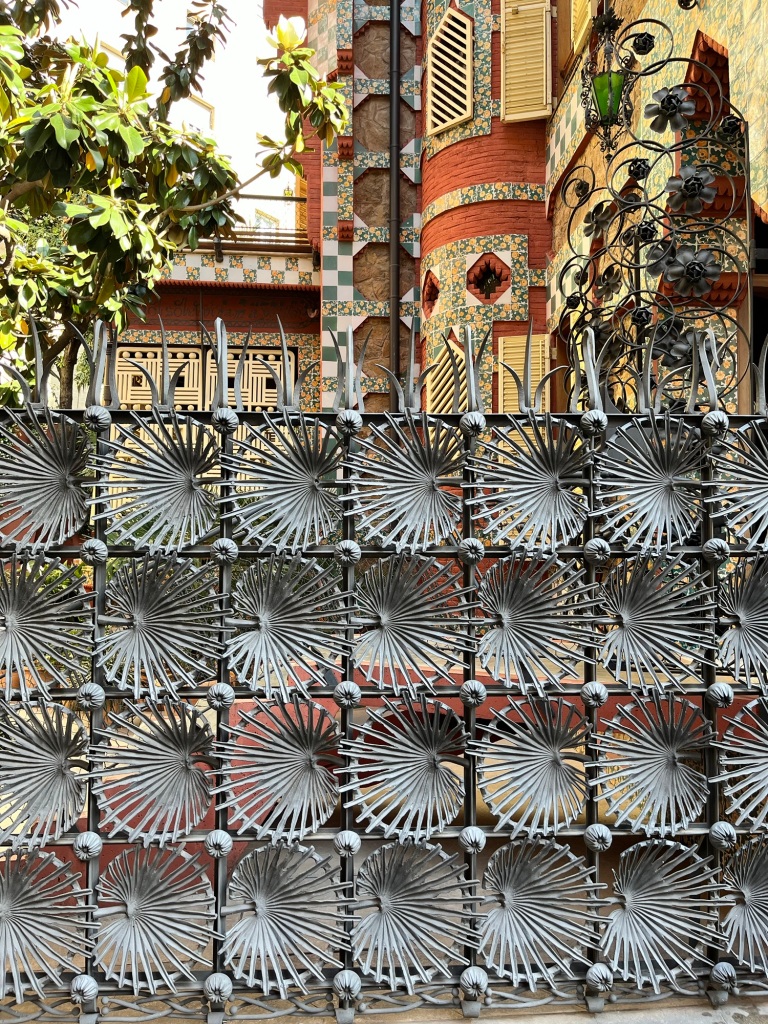




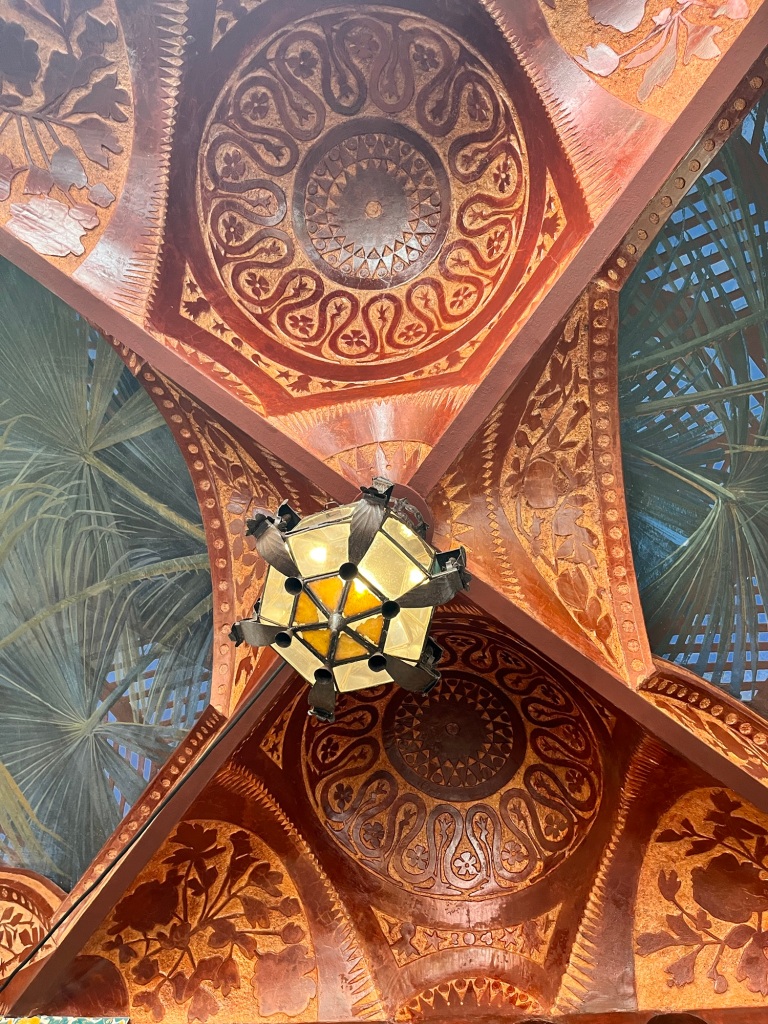
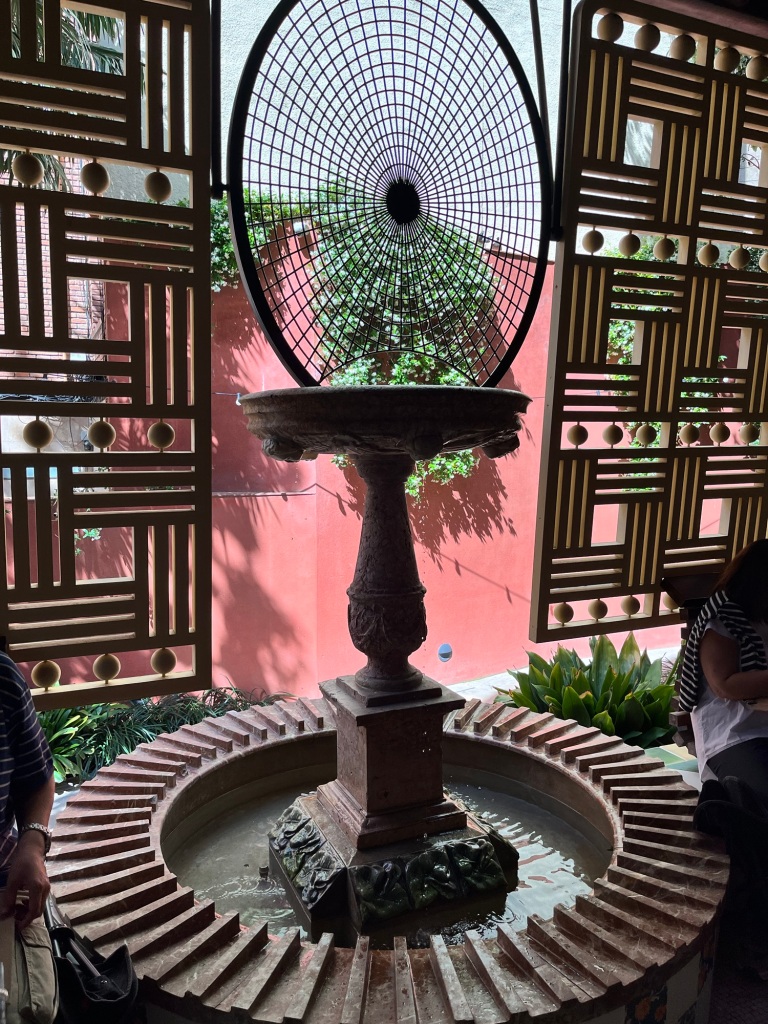
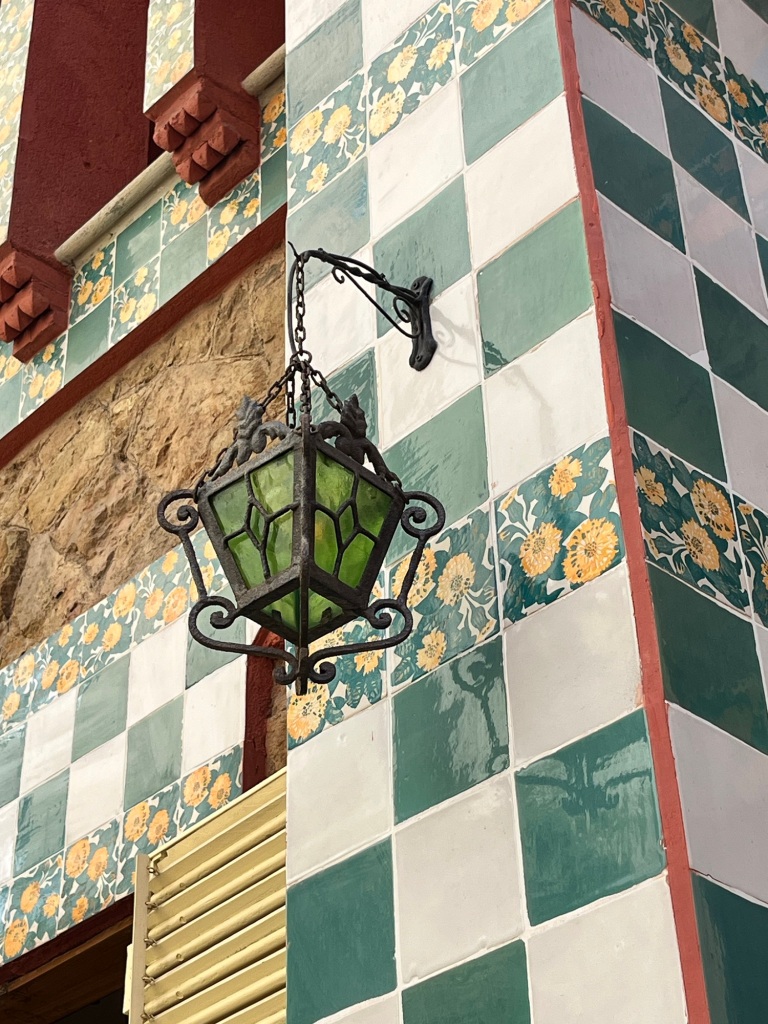




The Master bedroom originally had a wall separating the husband and wife’s sides. Our guide commented that they did not know which side was the man’s and which the woman’s. This is because on the side with the blue walls, the flowers on the ceiling are more feminine. And on the side with the more feminine colored walls. The flowers are more masculine. I quipped that our modern concept for blue is for boys and pink for girls didn’t arrive until the mid-19th century, and he was floored to learn that. Anyways, that’s my impact on historical accuracy.
The second site I visited was Gaudí’s final house, Casa Batillo, which was built between 1904-1906. There are two key themes to this house, one of which isn’t as obvious as the other.
The first and primary theme is the ocean. Both the exterior and interior reflect the underwater depths via patterns, waves, and colors. in this theme, the balconies on the front look like seashells.




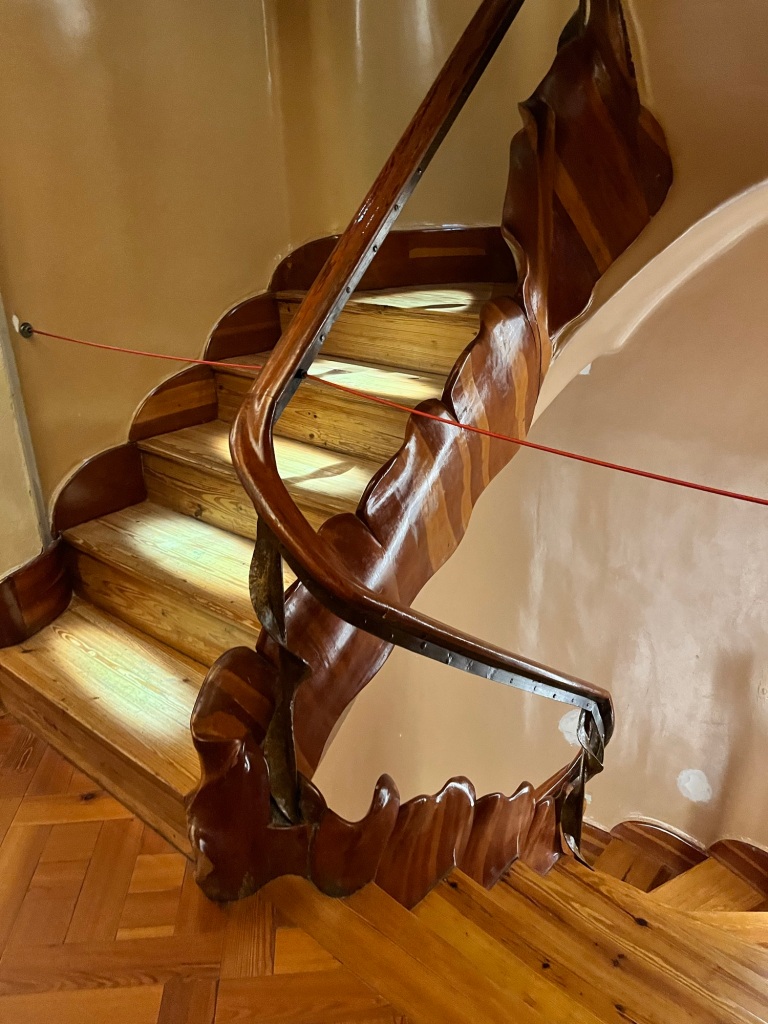
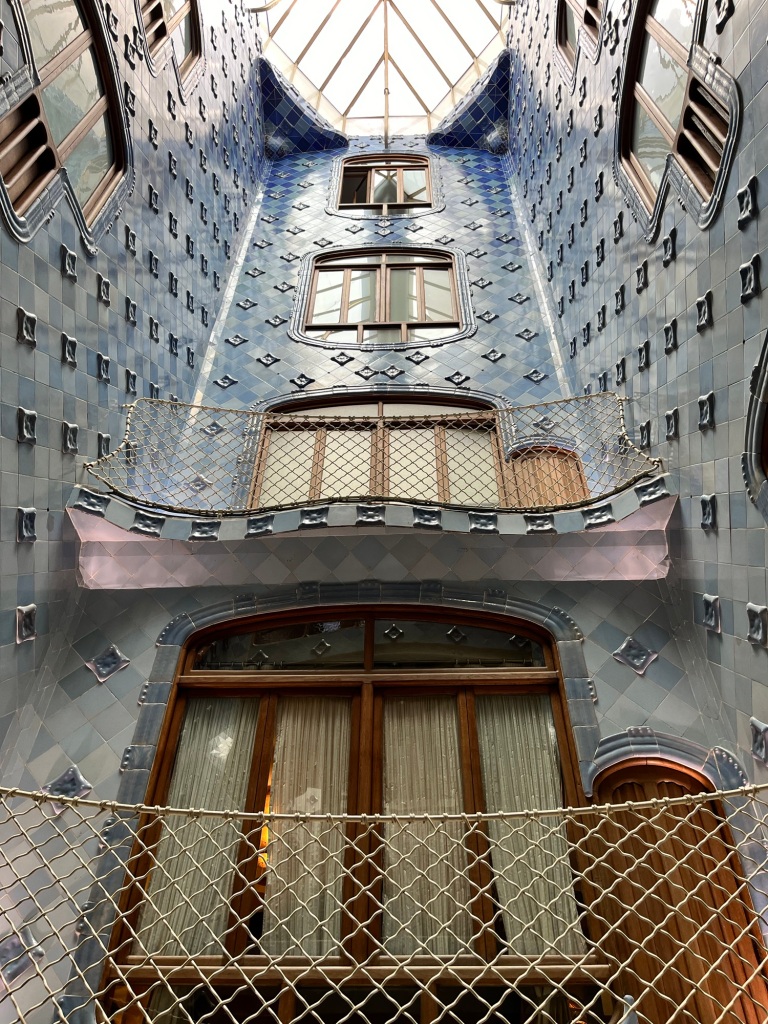

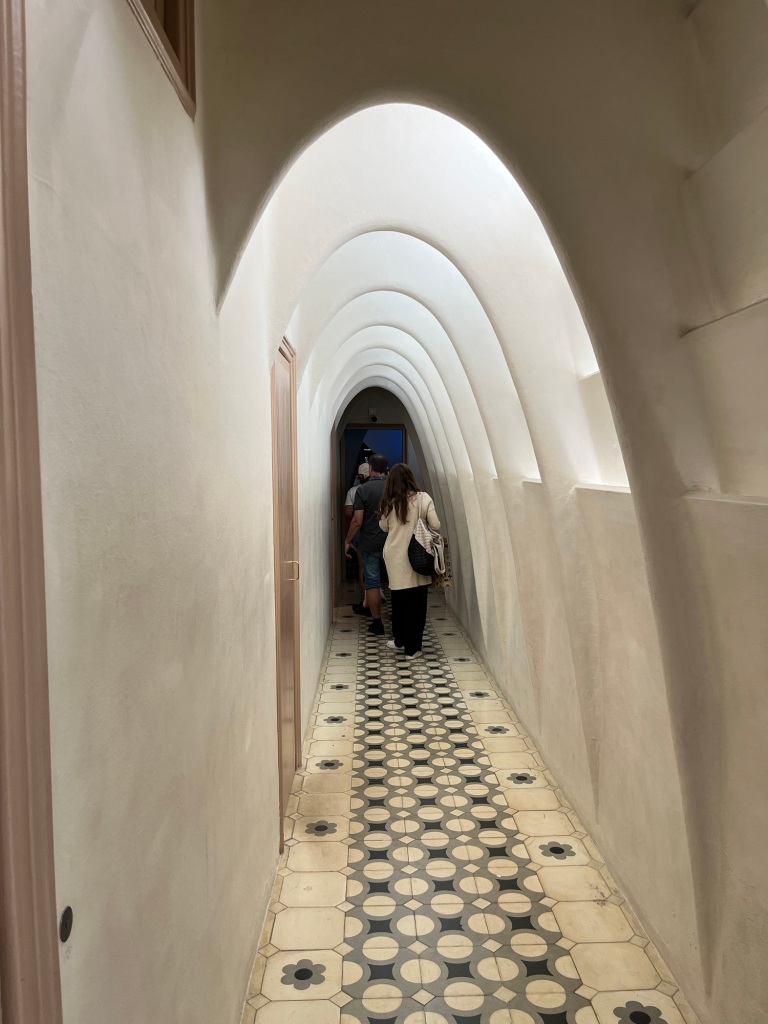
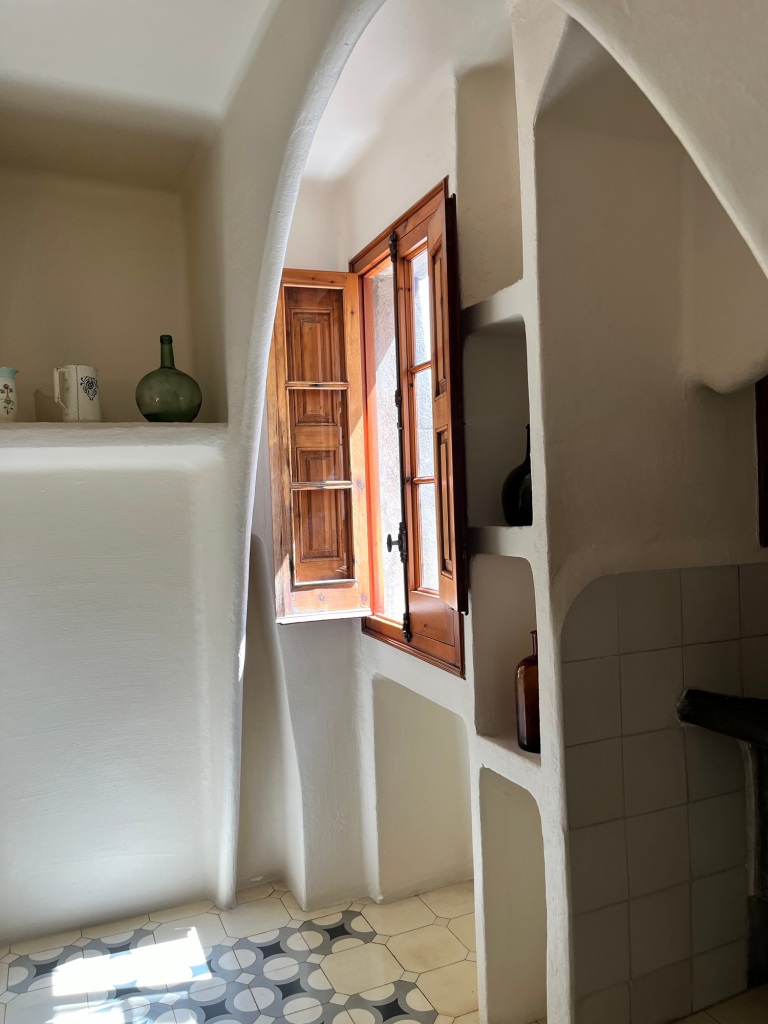
The second theme is Saint George and the Dragon. The dragon can be seen on the roof, and the balconies are the skulls of his victims. When you are on the rooftop, you can see that the dragon has been impaled.


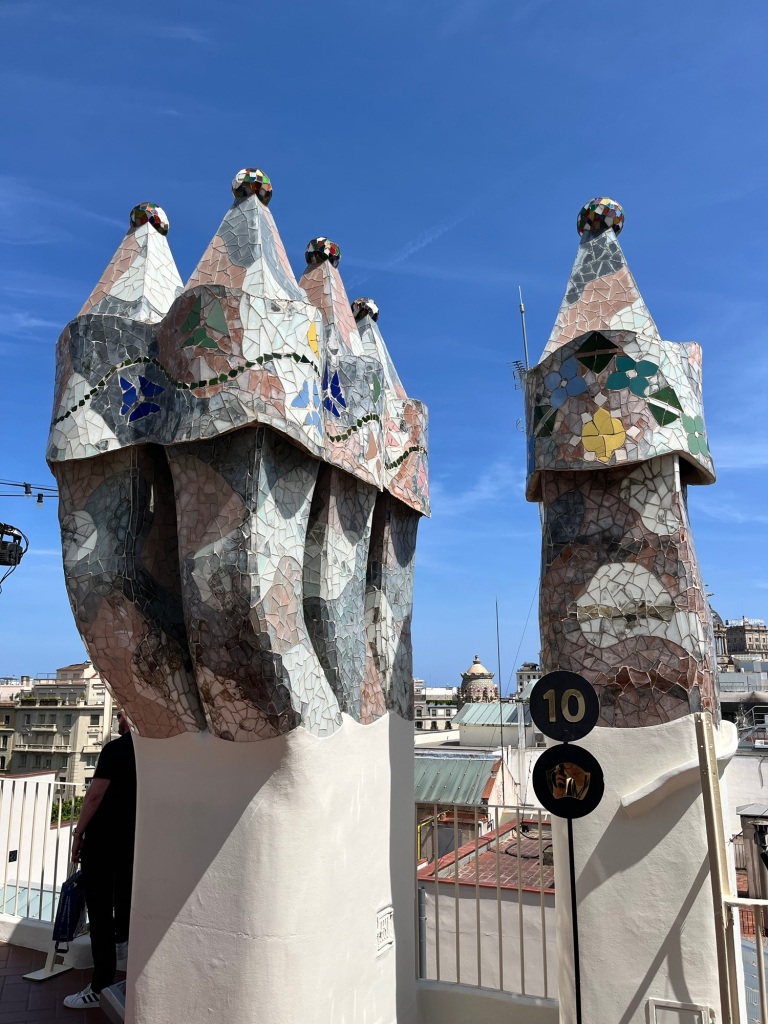
And last, but oh my, not least, we saw The Sagrada Familia, Gaudí’s final work which he never saw finished (and is in fact not finished yet).
The exterior of the Basilica is covered in Biblical symbolism, Gaudí wanted the exterior to evangelize those who saw it.
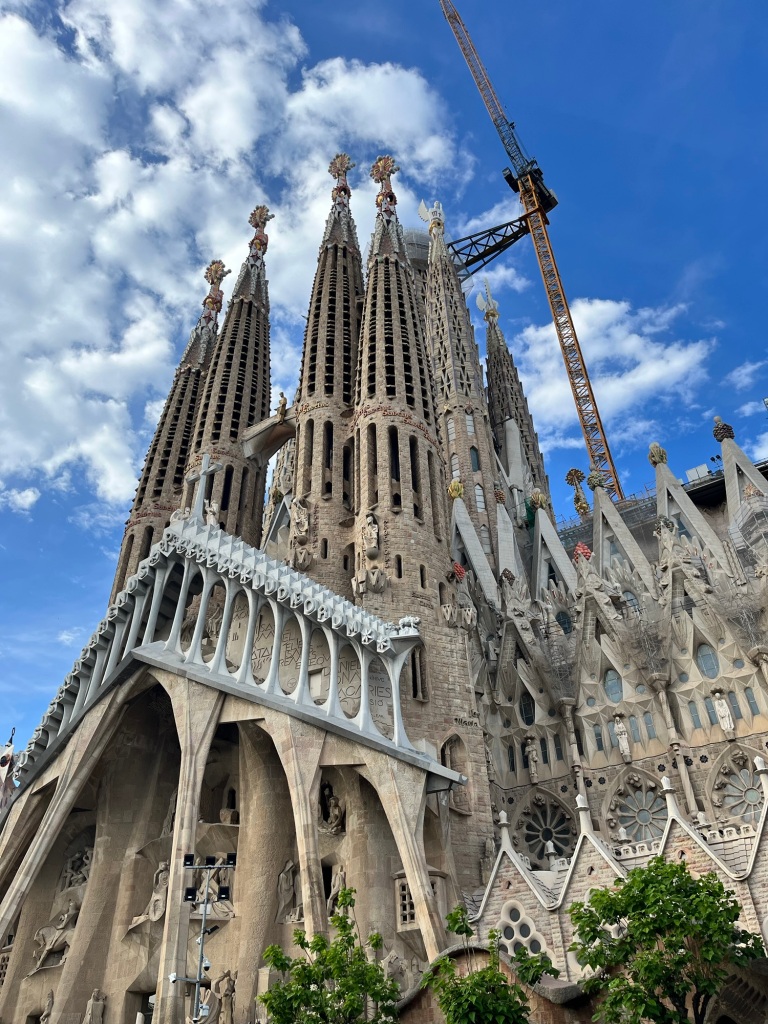
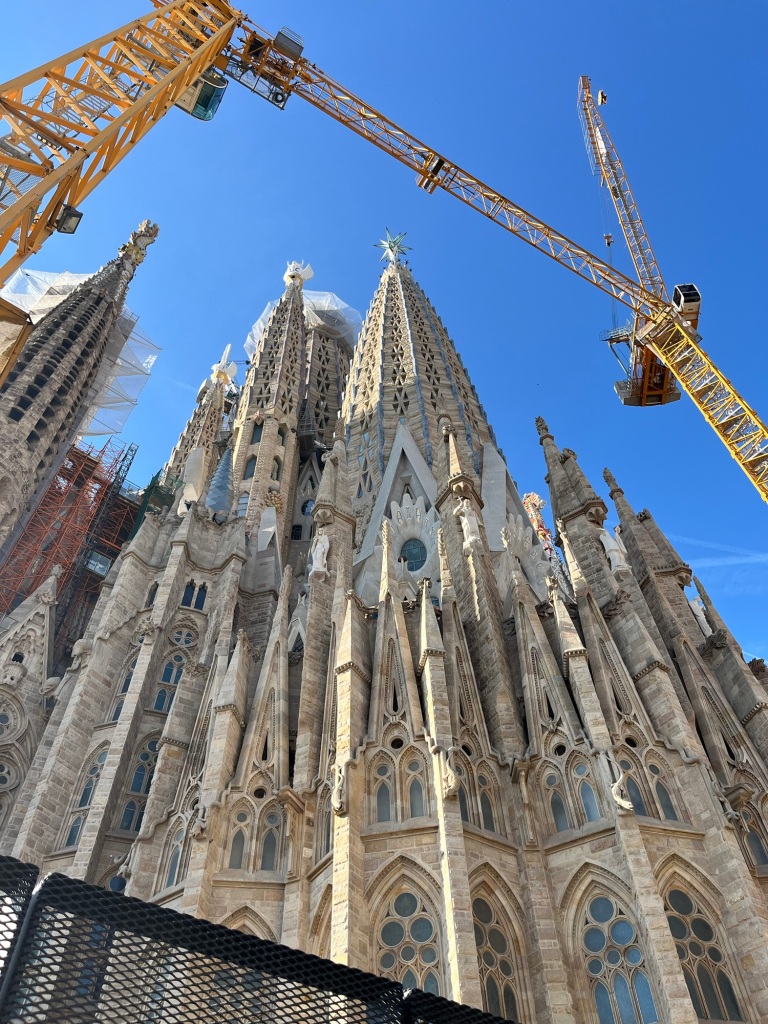
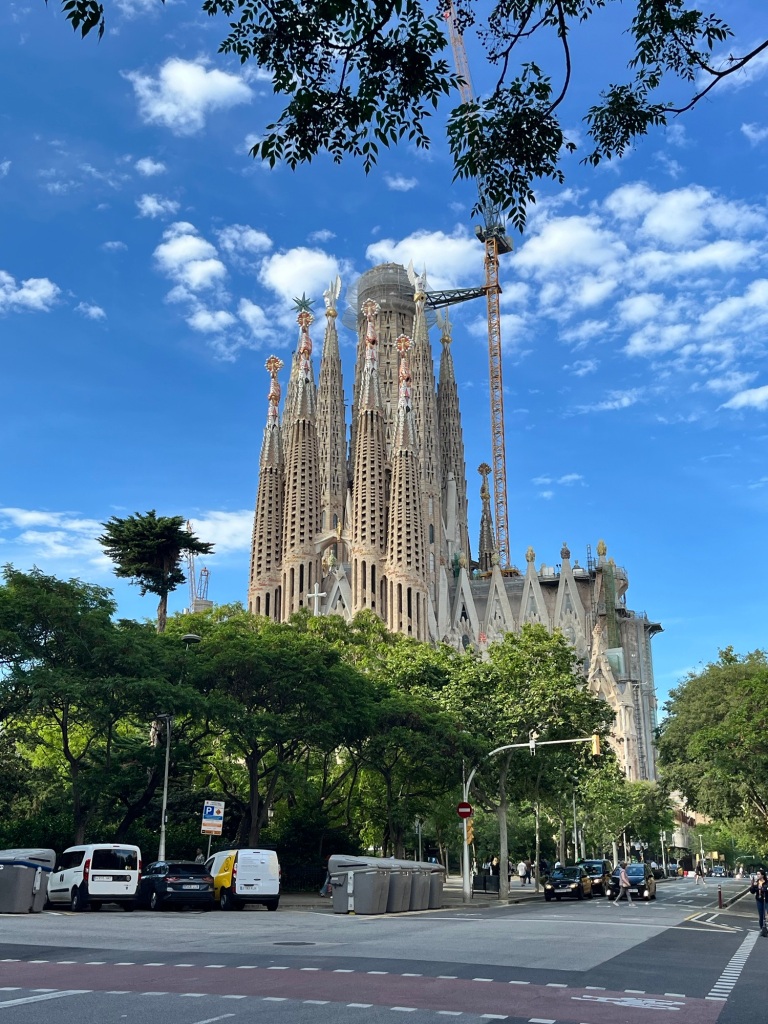
On one side, the Nativity Side, is dedicated to the birth of Jesus.
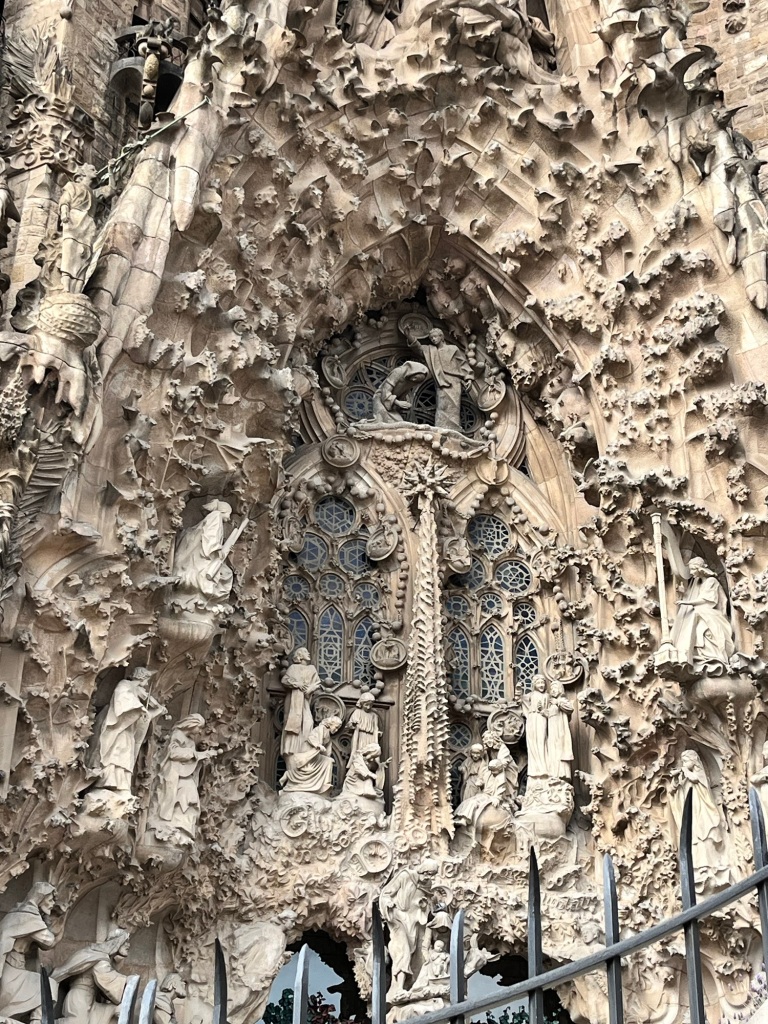



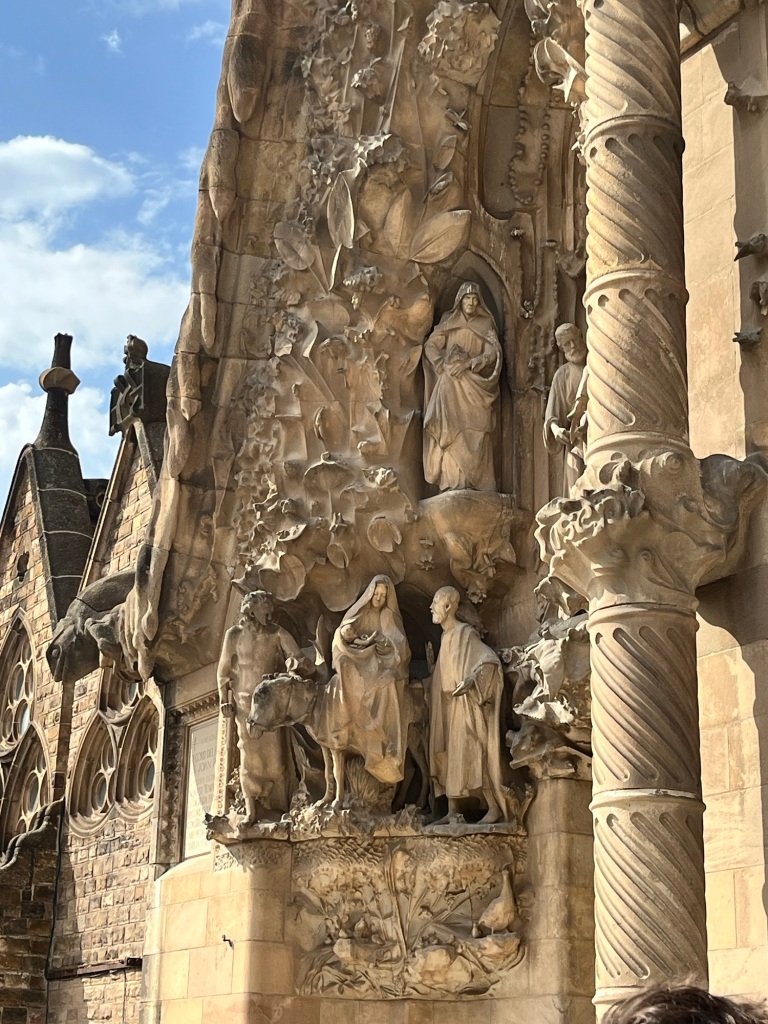
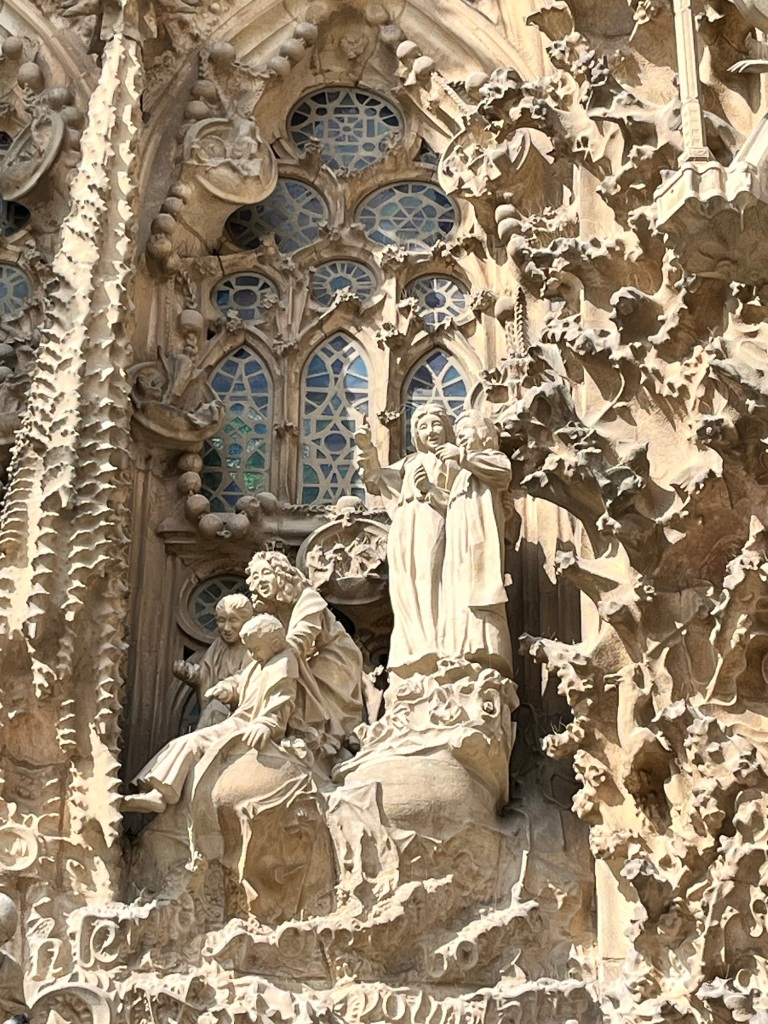
The other side, the Passion Side, is dedicated to Christ’s death. As you can see, this side holds a more somber look and feel than the Nativity Side.
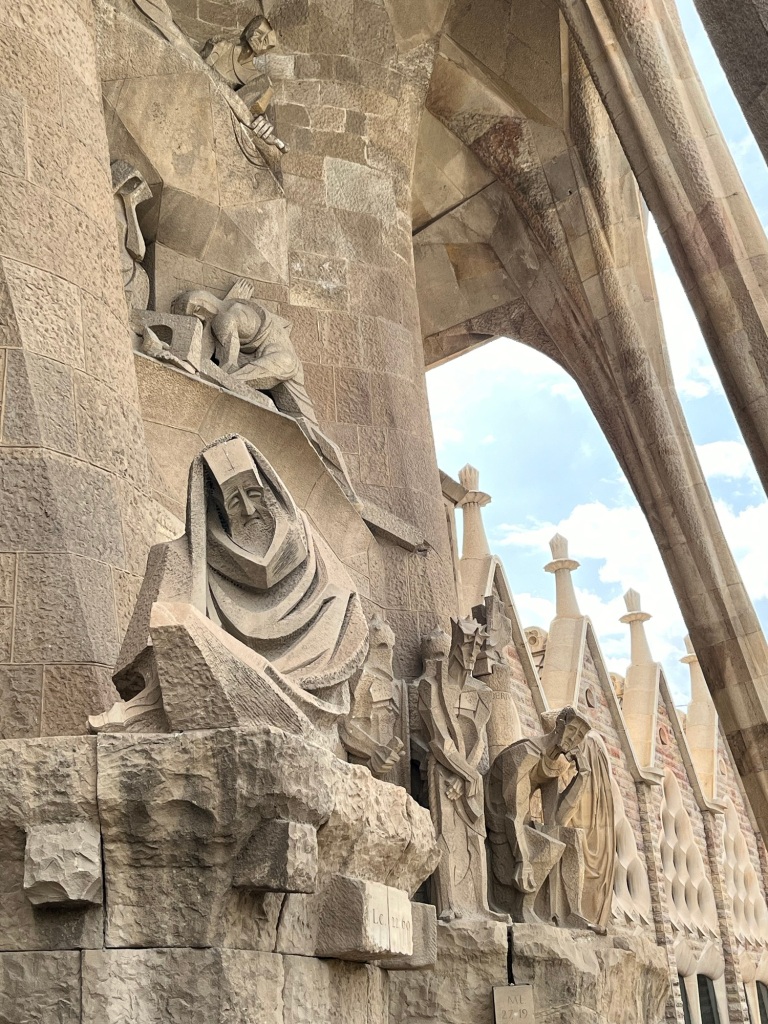
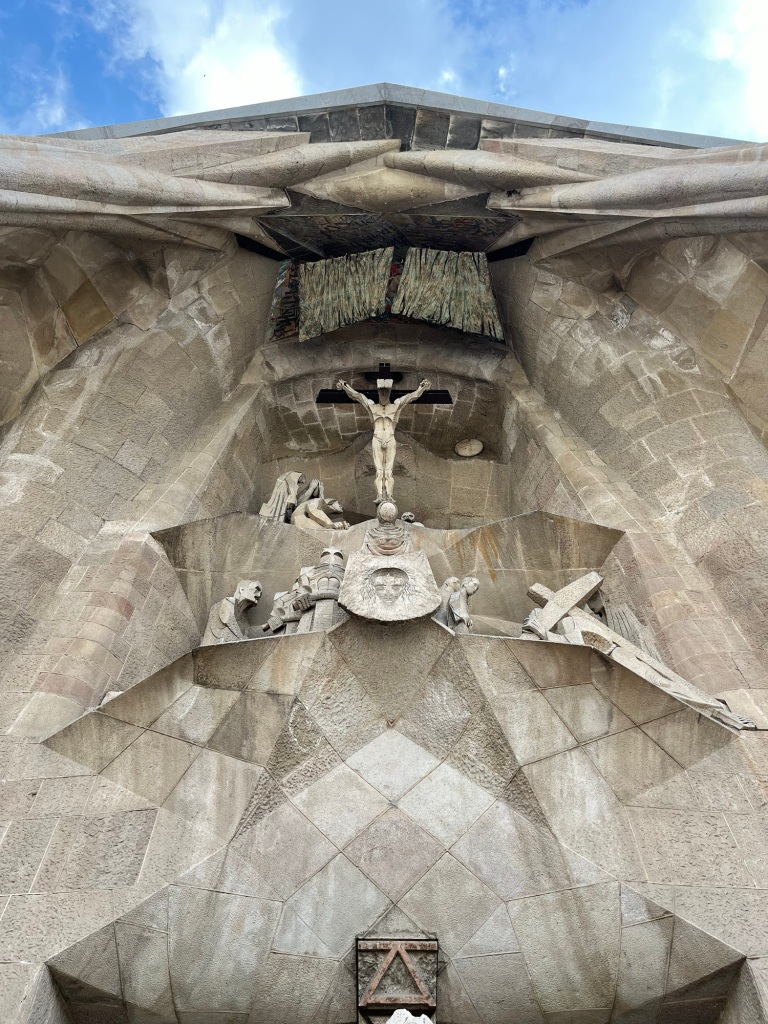


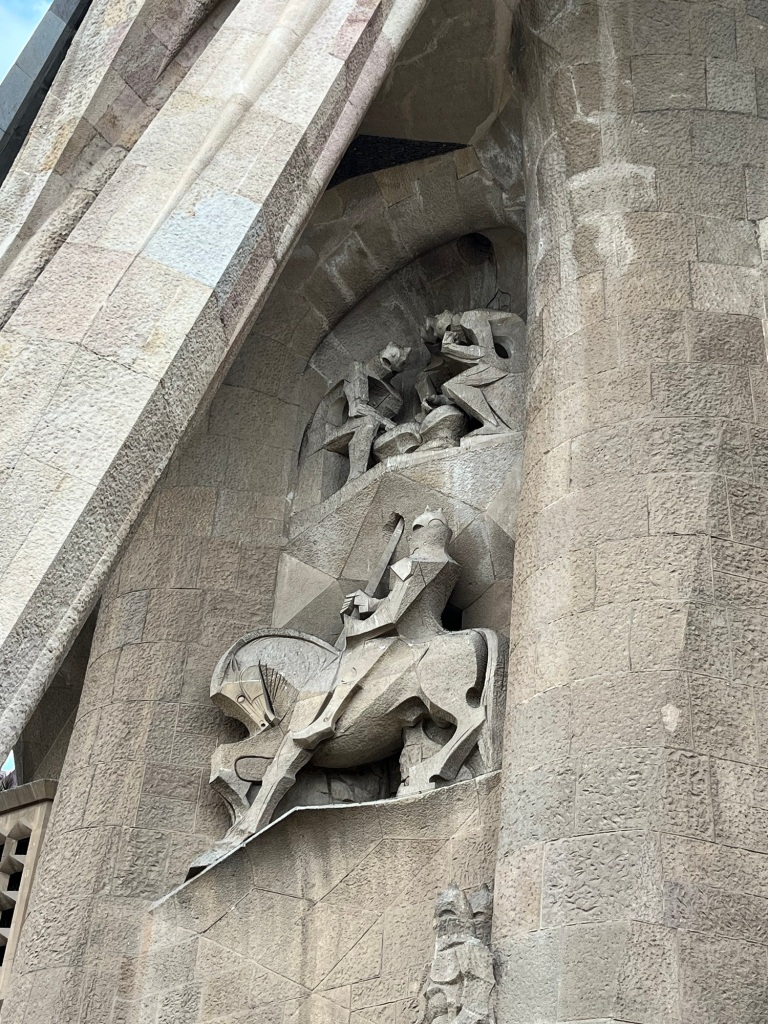

The third side, which is not complete will be the Glory Facade, representing Christ’s resurrection.
The inside of the Basilica, oh my. I was expecting the inside to be filled with imagery, but in fact found the opposite. Gaudí used a series of columns built to imitate a forest, builtin a gothic-naturalistic style. It has 36 columns and is laid out like a Latin cross.


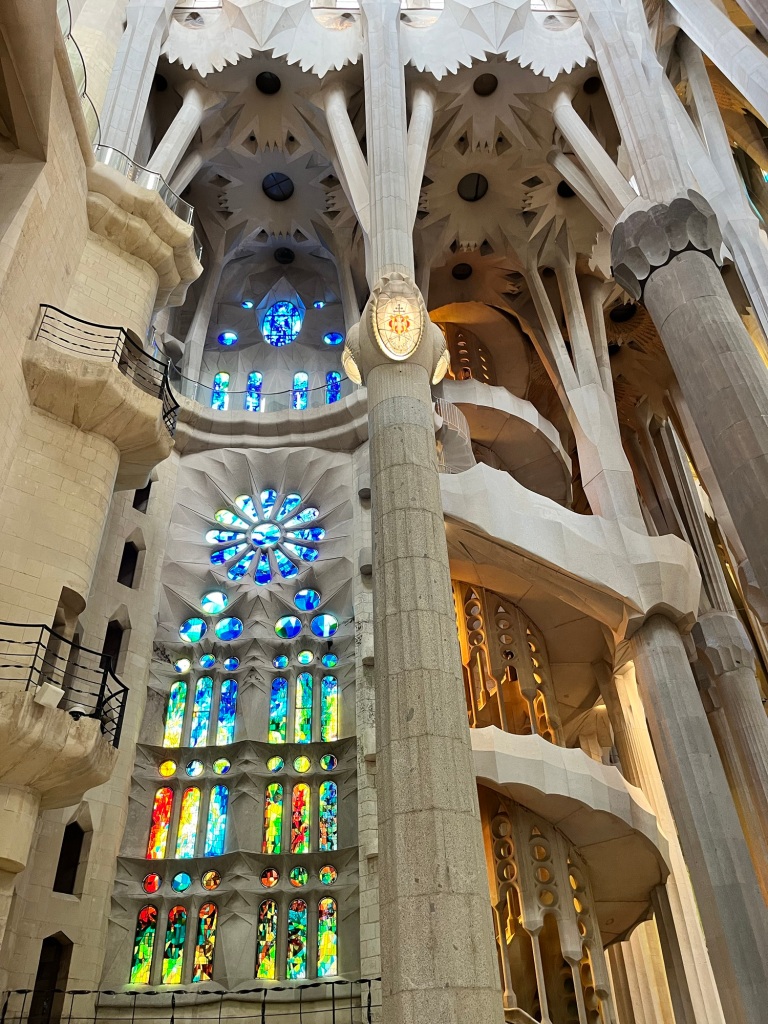

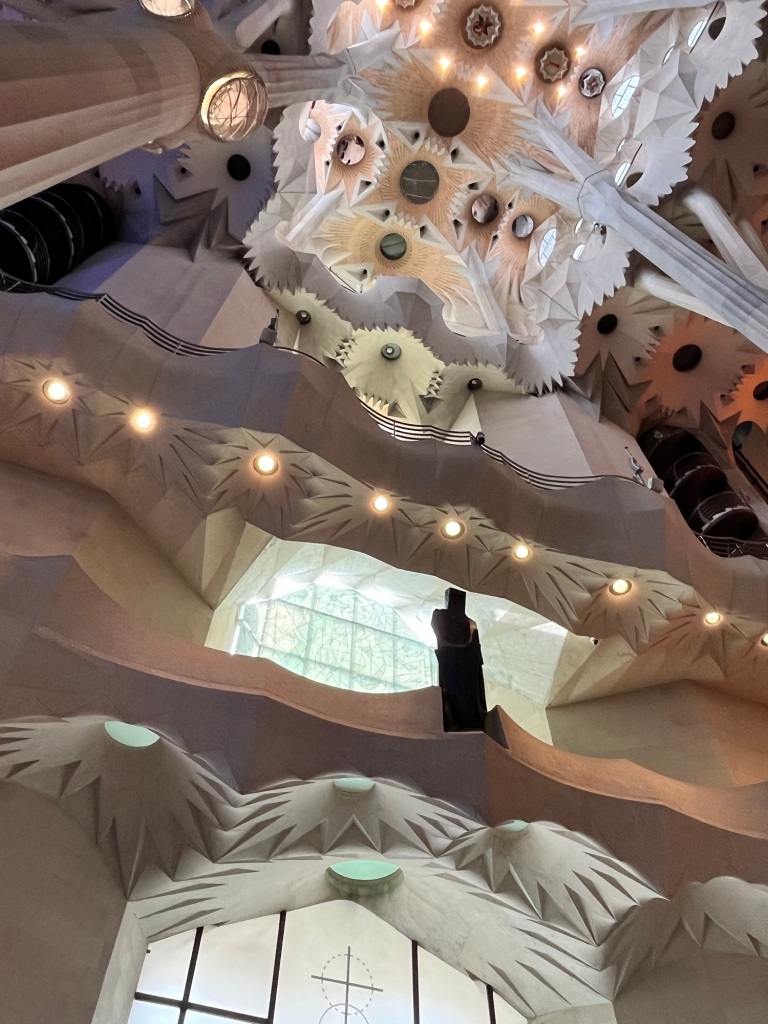
The stained glass windows set the mood, the yellow side reflecting the birth of Jesus, and facing East to the morning sun. The red side represents resurrection and faces the sunset.
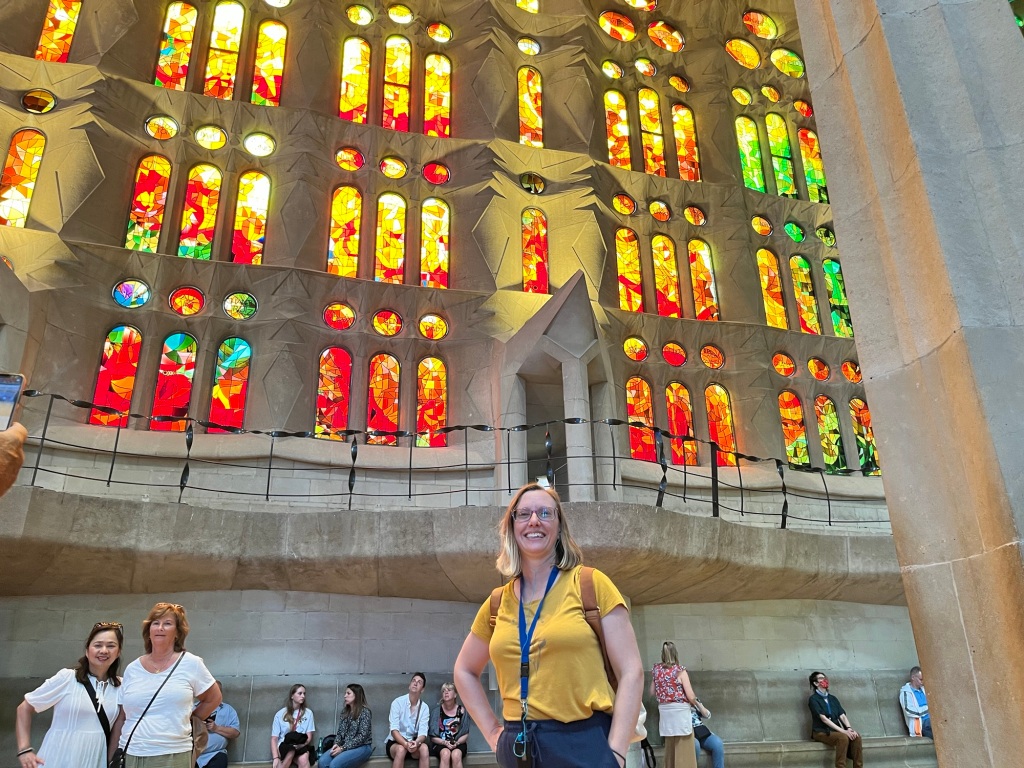


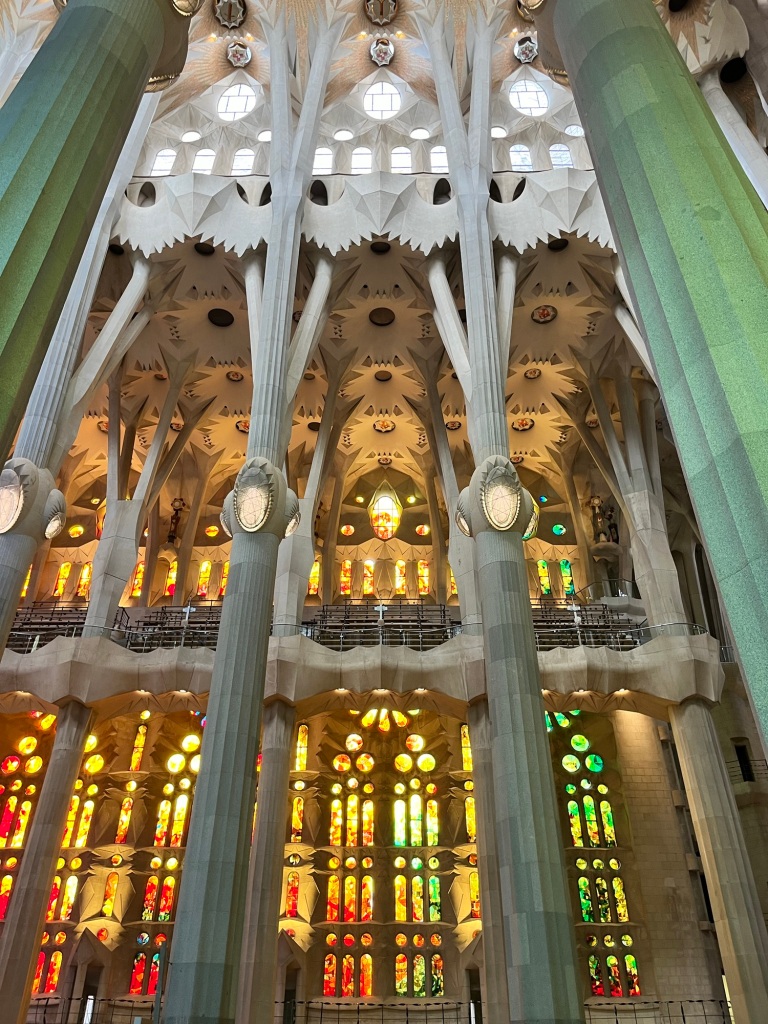
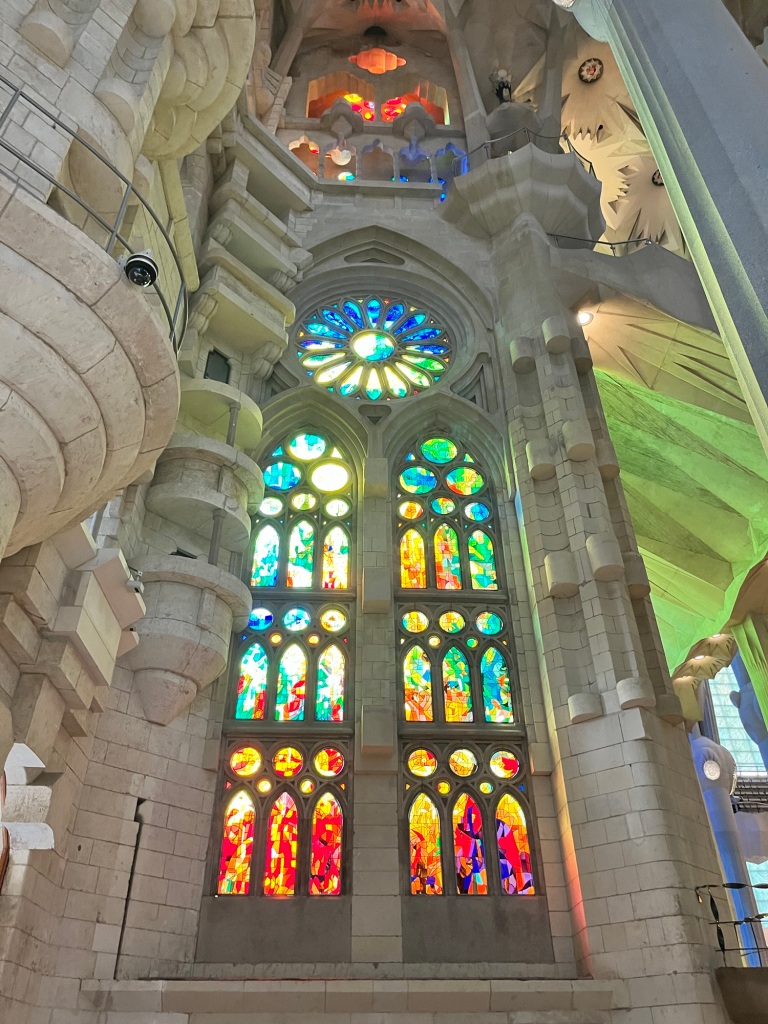

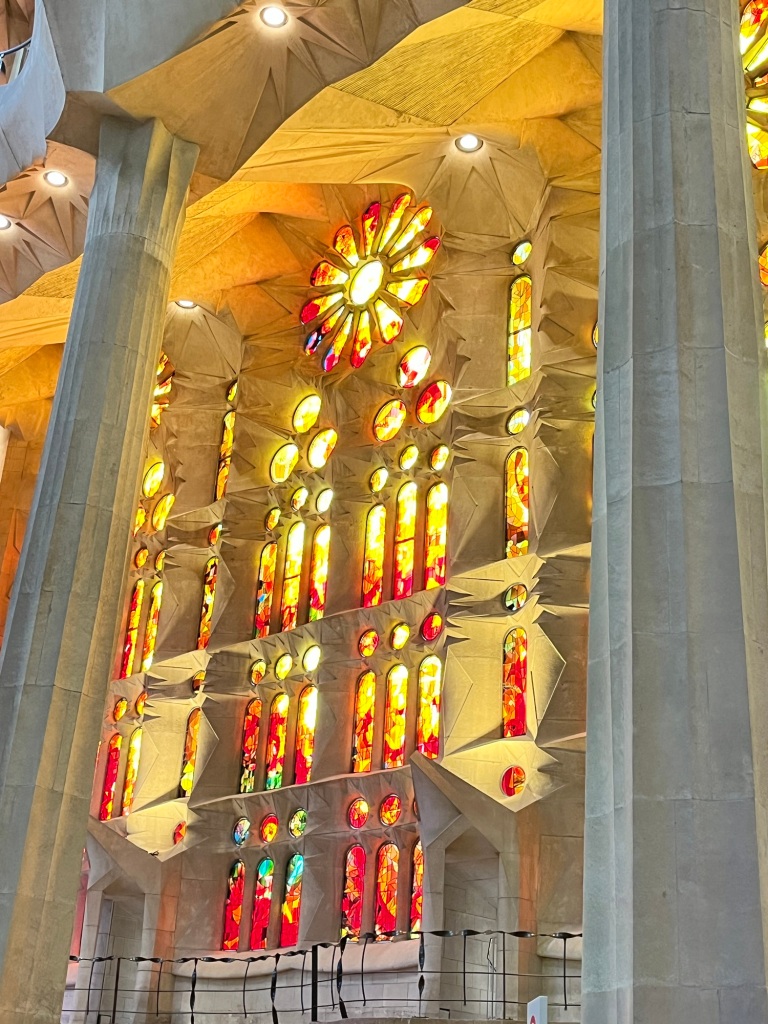
The Sagrada will stand at almost 570 feet, about ten feet lower than the nearby Montjuic, Gaudí thought nothing should be taller than God’s own creation. It does stand out nicely when viewed from Montjuic though!

Gaudí died in a terrible accident with a trolly and is now buried in the crypt of the Sagrada Familia. The final tower will be complete in 2026, but they expect the true front of the church (The Resurrection Side) to take another ten years.
I’ll leave you with some spectacular views from the top of the Nativity Tower.



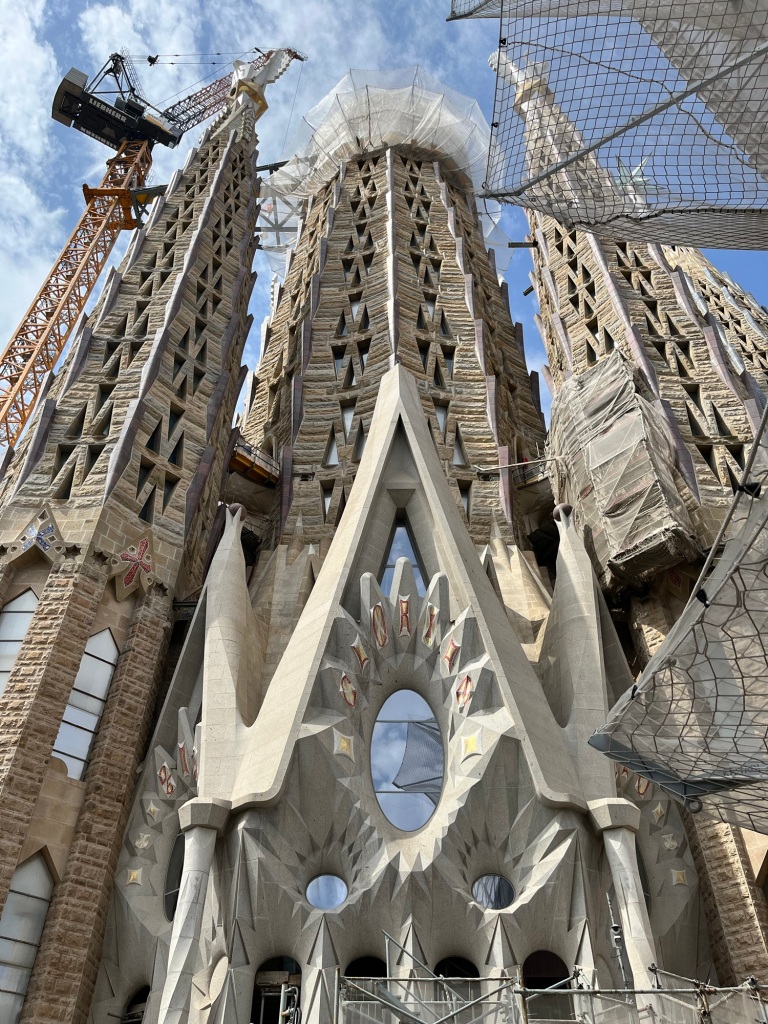
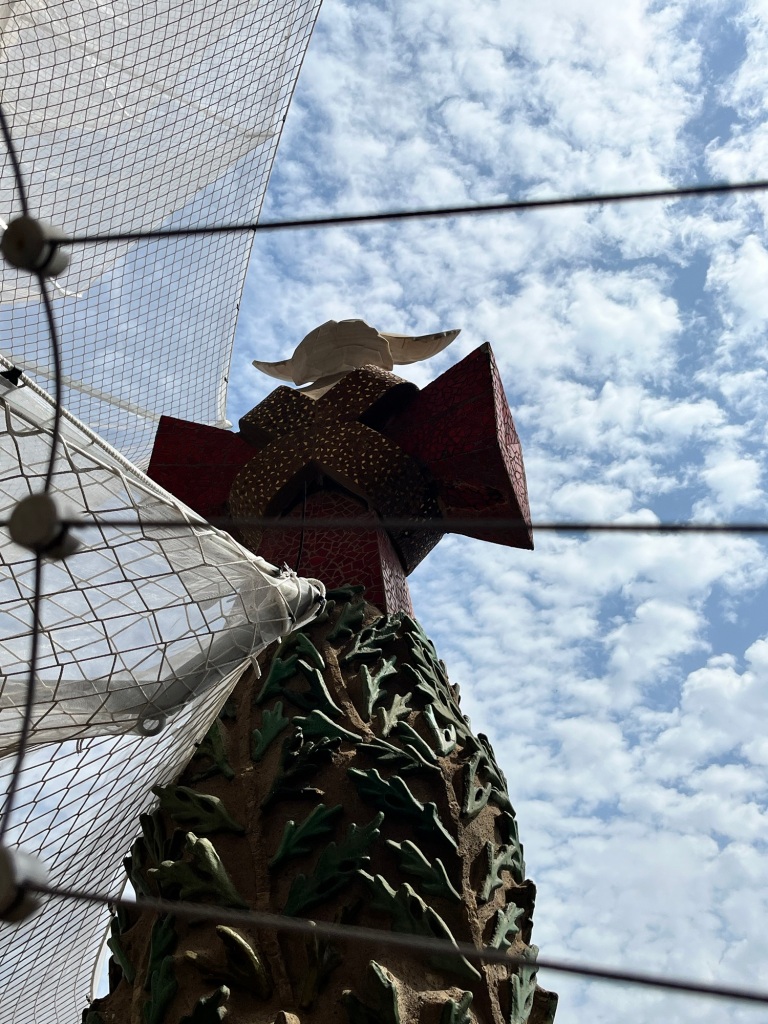
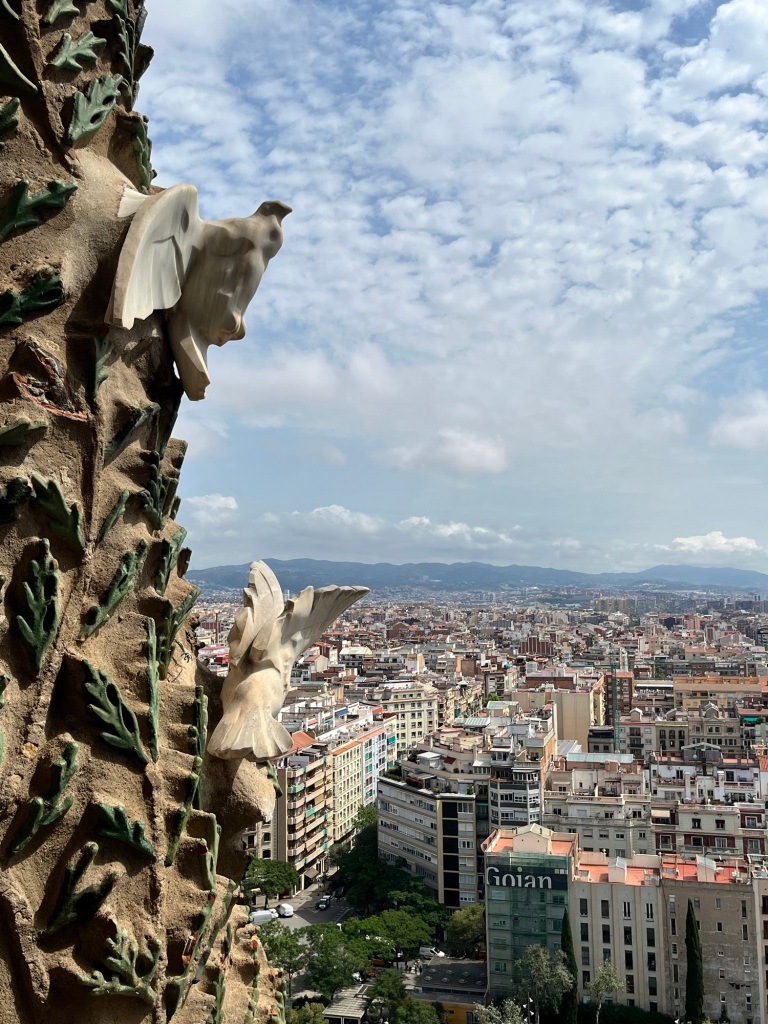

Wow! Didn’t you wish you could just lay down and study the ceiling? and the windows? Amazing…
LikeLike